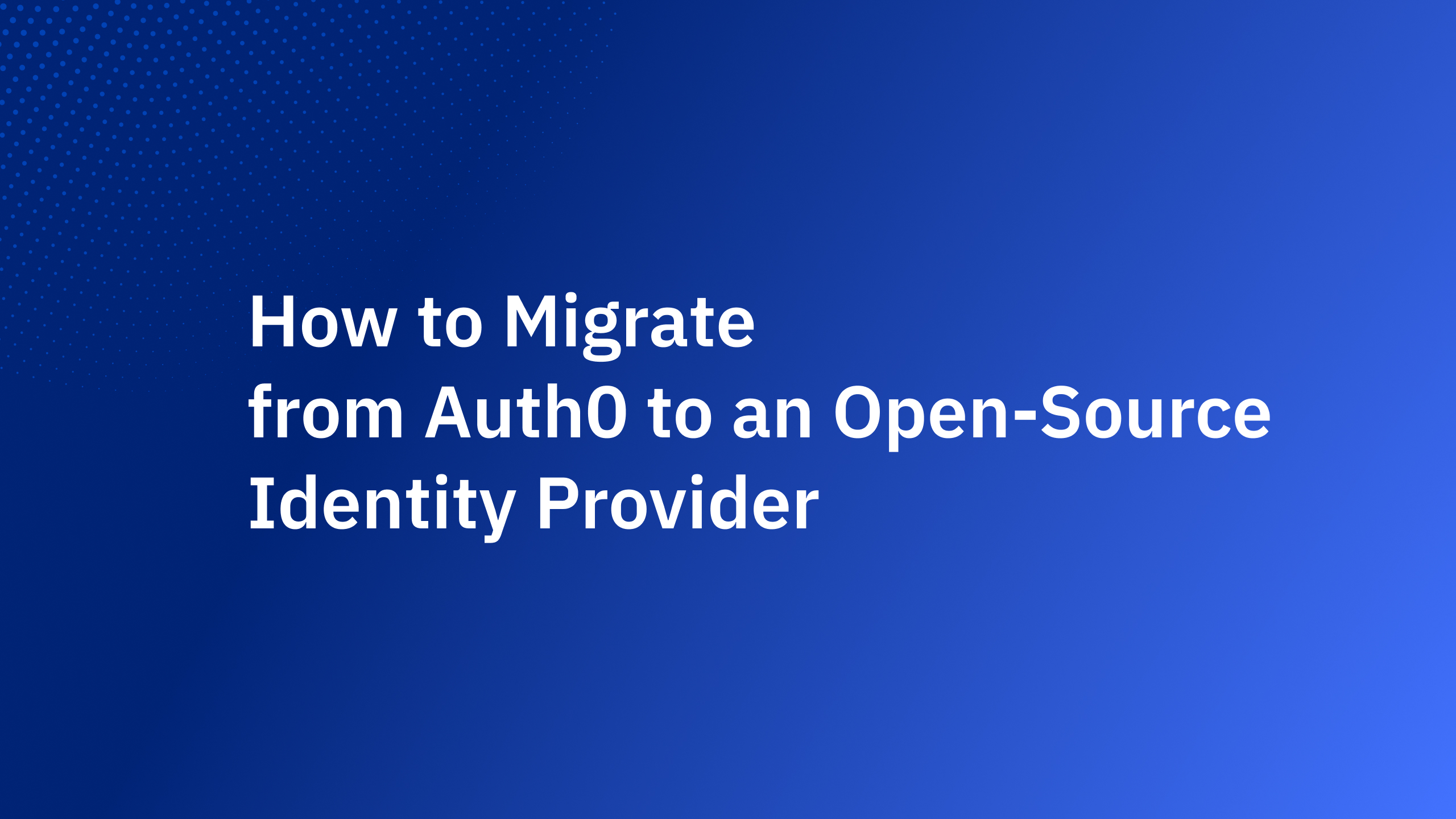Choosing between building or buying an identity management solution is not a straightforward decision. It requires careful consideration of both present needs and future growth. By weighing the below factors carefully and considering the unique requirements and circumstances of your organization, you can make an informed decision that positions your organization for success in the digital age. In this article, we'll dive into the key considerations that can guide this decision.
What is Identity Management?
Identity Management also known as Identity and Access Management (IAM) often abbreviated as IAM, is a framework for ensuring the right individuals access the correct resources at the appropriate times for valid reasons. As a critical component of enterprise IT security and data management, IAM systems streamline user authentication, maintain access controls, and safeguard sensitive data. By integrating IAM solutions, businesses not only enhance security but also improve user experiences and regulatory compliance.
Key signs to upgrade to an Identity Management Solution
Nowadays, it's important for businesses to use trusted and common systems like OpenID Connect, SAML, WS-Federation, and OAuth. These systems make it easier for users to sign in and are accepted by many companies. If your users have multiple accounts and can't link them, or if they need to log in several times for different parts of your site, then it's a clear sign you need to upgrade.
Also, if your best tech people are spending too much time making sign-in tools rather than improving your main business software, you might be wasting their skills. It becomes even more urgent if you've ever had a security issue where private data was exposed, or if you're worried about one happening in the future. And, if other businesses are looking for certain safety or quality badges that you don't have, it's time to think about getting those to stay competitive.
In the B2B case, more and more customers want to use their work login details to access your product. This means you need to offer 'Enterprise Federation,' letting them sign in with systems like Active Directory, along with the usual username/password option. Right now, if there's a sign-in issue, your customers can't easily get help from their own IT team, which can be a drawback.
If your business is operating in B2C and you're mainly getting information about your users from forms or surveys, adding a way to gather data from other sources can help you know your customers better (See also article How Profile Enrichment can boost your product), boosting your sales through focused offers. Plus, if you're selling directly to people and they can't quickly sign up using their social media accounts, you're missing out. Especially as your number of users grows, performance issues can arise, hinting at the need for improvements.
If you're looking to set different access permissions for your employees, it's essential to have a system in place. Especially when new employees join or when someone leaves, you should be able to quickly update who has access to what. It keeps things efficient and secure.
Business benefits of investing in an Identity Management System
Why Investing in Identity Management is essential for B2B, B2C, and B2E, top reasons explained in this section.
- Cutting down engineering costs is a breeze with third-party identity management. Instead of spending endless hours building and securing authentication, teams can easily use powerful features and pre-made integrations. With tools provided by IAM solutions, developers save time and can focus more on the main parts of the app, not the login details.
- Boosting security is another perk. Using an IAM solution ensures data is stored safely and follows strict security rules. Plus, with features like federated identity, users avoid risky habits like using the same password everywhere, making the whole system even safer.
- Enabling enterprise adoption is simpler with identity management solutions. These tools link easily with popular systems like Microsoft Active Directory, LDAP, and Google Apps. This means businesses can let their users log in with existing company accounts, making access smoother and reducing the chance of users leaving.
- Higher enterprise revenue is another benefit. By meeting any enterprise federation request and security standards, identity management tools reduce costs and ensure easy sign-ins with familiar credentials. This cuts down barriers, helping to increase earnings from enterprise users.
- Speed up sales and onboarding processes. There's no need for customers to learn a new login system or remember another password. They can just use their usual work login details across different services. For everyday consumers, a unified login system provided by identity management ensures a painless sign-up and access experience. This system collects useful user data that businesses can leverage for better services and sales. Plus, with a third-party solution, companies can handle any number of sign-ins without performance issues."
- Moreover, An IAM solution's Single Sign-On (SSO) feature is a game-changer. Users can simply log in once and access various apps, whether it's on the cloud or local servers, without re-entering their credentials. This includes big names like Salesforce, Office 365, and more. Additionally, with identity management, businesses can effortlessly manage who gets access to what. Whether someone's joining, moving up the ladder, or leaving the company, their access levels can be easily adjusted or removed.
Key factors to consider when choosing Identity Management
When choosing an identity management tool for your business, remember these key points:
Easy Setup: The ideal tool should save you time in setup. Look for one with easy-to-use kits, clear guides, SDK for different programming languages and frameworks, efficient APIs, and simple settings.
Where to Host: Your tool should give you freedom on where to host – be it on their cloud, your cloud, or even in your own data center.
Compatibility: The right tool should work with almost all major platforms. For staff, this includes platforms like Microsoft's tools and Google Apps. For customers, it should connect with platforms like Facebook, Google, and Twitter, and even allow for easy sign-in methods like SMS, WhatsApp, Email, or Biometric authentication.
Customizable: Your business will change, so your identity tool should too. It should let you tailor its features without always needing expert help. You should also be able to add functions like moving user data or integrating more apps.
Top Security: Safety is key. Ensure your tool is approved by global safety experts and meets standards like OAuth, SAML, and HIPAA. It should also have protection against potential security threats.
Moving Made Easy: Switching to (or from) your identity tool should be effortless. Avoid tools that lock you in and make sure they can connect with your current user systems without causing password issues.
Expert Help on Standby: Your tool’s support team should be available round-the-clock, boasting experienced professionals ready to guide you.
Conclusion
Handling online user identities can be tricky. With ever-changing standards and the need for regular security updates, it can take attention away from your main business goals. Yet, by looking at successful strategies from other companies and choosing adaptable features, an identity management system can be an asset to your business.
Simply put, Authgear makes this job easier and quicker. It helps your business stay ahead and grow, without the headaches.
How Authgear can help
Authgear provides an ideal solution to integrate, enabling the teams to introduce SSO and modern authentication methods. While the older system remains unchanged, a migration strategy is set in motion and executed. Using Authgear takes less than a day, compared to the extended months required for setting up an in-house identity management system. Take a look at Authgear's use cases.
Authgear also provides robust documentation for APIs, SDKs, quickstarts, and much more. The blog at authgear.com/blog is a source of all the latest news and tutorials on emerging and popular technologies and security topics. You can try Authgear for free and setup only takes minutes. You can also view the Authgear pricing page here authgear.com/pricing





_%20A%20Developer%E2%80%99s%20Guide%402x.jpg)


